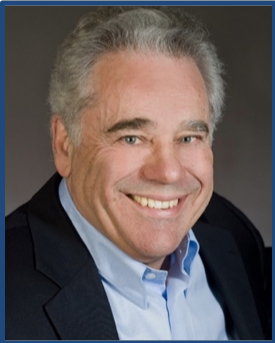
P E R S P E C T I V E S
by Rinaldo S. Brutoco
Rinaldo S. Brutoco is the Founding President and CEO of the Santa Barbara-based World Business Academy and co-founder of JUST Capital. He’s a serial entrepreneur, executive, author, radio host, and futurist who’s published on the role of business in relation to pressing moral, environmental, and social concerns for over 35 years.
Why Good Leaders are the Ones Who Make Us Feel Safe
In one of his massively watched Ted Talks, management guru Simon Sinek explains why good leaders inspire confidence, and why we feel safe when we have someone in charge of an organization who doesn’t demand trust but inspires it.
He takes it back to the nature of humanity as a social species. How when we evolved, we had to trust our fellow to watch out for lions in one direction while we hunted or gathered facing the other direction. That trust that the other fellow has our back is the basis of human society. As our civilization has gotten more complex and expansive, we still need this basic trust to make sure we can come together in the face of danger. The truth is there are always dangers to be faced, threats to be addressed, whether it’s market competition, an economic downturn, or a novel unseen virus. But if we come together and work cohesively, we humans can do amazing things.
The key variable of a cohesive organization– whether we are talking about a whole society, a combat troop, or a single company– is a good leader. It is the leader who sets the tone and trajectory of the entire organization.
When a leader makes choices that put the safety and lives of the people inside an organization first…incredible things can happen.
If, for example, an employee, or a citizen, fears that someone in a leadership role does not have his back and feels fear of losing his or her place within the organization, then the primary impulse will be to protect him or herself, and collective action becomes impossible. That inherently weakens the organization.
On the other hand, when a leader makes choices that put the safety and lives of the people inside an organization first, so that the people inside feel cared for and like they belong, incredible things can happen. The members of that kind of an organization have trust, and they feel secure in their place so that they can look outside of themselves and do what needs to be done.
Take, for example, General George C. Marshall during World War II, an era that is surprisingly similar to our present situation because it required a country-wide mobilization. General Marshall is best known for leading the United States military for
all of World War II, and for designing and implementing the Marshall Plan after the end of World War II. For many historians, he is a paragon of good leadership.
During World War II, just two months before the invasion of Poland, Roosevelt appointed him Chairman of the Joint Chiefs where he ran the war until its successful conclusion. He was responsible for mobilizing the military (and increasing its size so it was ready for war), which was a huge undertaking, and then constructing a global victory! Now, Marshall was extremely bright, but he was most successful as a leader because of his ability to find unique talents and strategically place them in assignments to help develop their growth and allow them to succeed.
He was also someone who understood innately the need to provide a solid example through his own activities of showing up each day, taking responsibility for what was occurring, and supporting his men however they most required at the moment– without worry of his personal inconvenience. Marshall had what today we would call high emotional intelligence and was able to see each of his admirals and generals for the unique person and talent they possessed. This ability to see them as individuals, and relate to them as individuals, created a relationship of trust with all the military up and down the chain. He had their back, he was a true “servant leader,” and his military instinctively measured up to the trust he showered on them with commitment to their common cause.
Going back to Simon Sinek for a moment, he points out that leadership is a choice, not a rank. Just because someone has authority over us does not mean that we should choose to follow them. A leader is someone who makes the choice to look after the people around him or her, and in response, those people are willing to follow.
Perhaps the essence of General Marshall’s brilliance in leadership is expressed in one of his most noted quotations: “Men can do a great deal with very little if they have high morale and determination.” In other words, the most important thing a good leader can do is promote a sense of trust and belonging and help the people feel safe and part of something larger than any one person. That’s how the impossible gets done.
Published in the Montecito Journal – April 9, 2020 Edition


